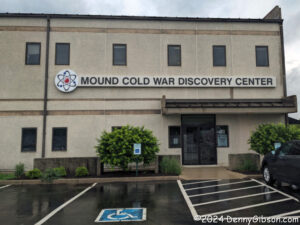 I don’t know that rainy days were actually made for museums but the two do fit together nicely. A visit to the Mound Cold War Discovery Center was a very nice fit for this week’s rainy Friday. Before stumbling upon a reference to the Miamisburg, Ohio, museum, I had no idea of the area’s role in both the Cold War and the “hot war” that preceded it.
I don’t know that rainy days were actually made for museums but the two do fit together nicely. A visit to the Mound Cold War Discovery Center was a very nice fit for this week’s rainy Friday. Before stumbling upon a reference to the Miamisburg, Ohio, museum, I had no idea of the area’s role in both the Cold War and the “hot war” that preceded it.
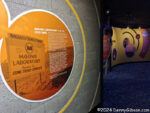 When I first read — or possibly heard — that there was a museum nearby dedicated to nuclear research and development, I pictured a musty warehouse-type place with some old lab equipment on display. What I found was an excellent presentation of history and science put together by Dayton History. The complex may have once contained some unattractive buildings but the museum is housed in an inviting former administration building built in the 1980s.
When I first read — or possibly heard — that there was a museum nearby dedicated to nuclear research and development, I pictured a musty warehouse-type place with some old lab equipment on display. What I found was an excellent presentation of history and science put together by Dayton History. The complex may have once contained some unattractive buildings but the museum is housed in an inviting former administration building built in the 1980s.
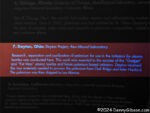
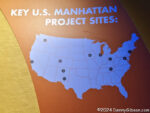
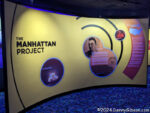 The Manhattan Project started in New York, but it soon involved locations throughout the entire country.
The Manhattan Project started in New York, but it soon involved locations throughout the entire country.
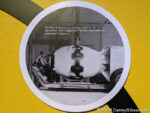 As noted in one of the photos above, the Dayton Project was responsible for the separation and purification of the plutonium used in “Gadget” and “Fat Man”. “Gadget” was the bomb exploded in the Trinity Test on July 16, 1945. “Fat Man” was the bomb dropped on Nagasaki on August 9, 1945. “Little Boy”, the bomb dropped on Hiroshima on August 6, 1945, used enriched uranium rather than plutonium. That’s “Fat Man” in the photo at left. “Bockscar”, the plane that dropped “Fat Man”, is displayed at the Air Force Museum in Dayton along with a full-size replica of the bomb.
As noted in one of the photos above, the Dayton Project was responsible for the separation and purification of the plutonium used in “Gadget” and “Fat Man”. “Gadget” was the bomb exploded in the Trinity Test on July 16, 1945. “Fat Man” was the bomb dropped on Nagasaki on August 9, 1945. “Little Boy”, the bomb dropped on Hiroshima on August 6, 1945, used enriched uranium rather than plutonium. That’s “Fat Man” in the photo at left. “Bockscar”, the plane that dropped “Fat Man”, is displayed at the Air Force Museum in Dayton along with a full-size replica of the bomb.
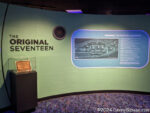
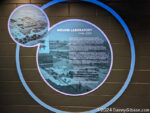 Construction of the first seventeen buildings comprising Mound Laboratory began almost immediately after World War II ended. The facility opened in early 1948 to support atomic weapons production.
Construction of the first seventeen buildings comprising Mound Laboratory began almost immediately after World War II ended. The facility opened in early 1948 to support atomic weapons production.
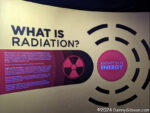
 One section of the museum offers some general science information without any obvious direct ties to Mound Laboratory. Perhaps its purpose is to tamp down visitors’ concerns over strolling about an area where radioactivity was once a major feature.
One section of the museum offers some general science information without any obvious direct ties to Mound Laboratory. Perhaps its purpose is to tamp down visitors’ concerns over strolling about an area where radioactivity was once a major feature.
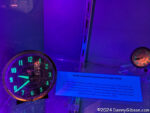

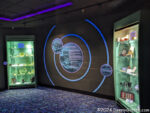 Yes, it does look like letting visitors know that a little radiation never hurt anybody just might be a goal.
Yes, it does look like letting visitors know that a little radiation never hurt anybody just might be a goal.
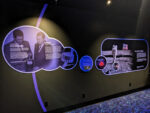
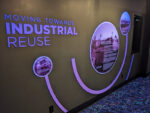 Due mostly to the invention of the Radioisotope Thermoelectric Generator which uses radioactive fuel to generate electricity, Mound Laboratory made significant contributions to a variety of ventures into space. Eventually, all of its missions were ended or moved elsewhere and the complex is now an industrial park much like those in other towns.
Due mostly to the invention of the Radioisotope Thermoelectric Generator which uses radioactive fuel to generate electricity, Mound Laboratory made significant contributions to a variety of ventures into space. Eventually, all of its missions were ended or moved elsewhere and the complex is now an industrial park much like those in other towns.
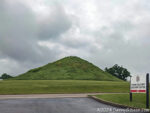 Anyone unfamiliar with the area and wondering where the laboratory got its name can probably figure it out with a glance out the museum’s front door. Read about that here.
Anyone unfamiliar with the area and wondering where the laboratory got its name can probably figure it out with a glance out the museum’s front door. Read about that here.
